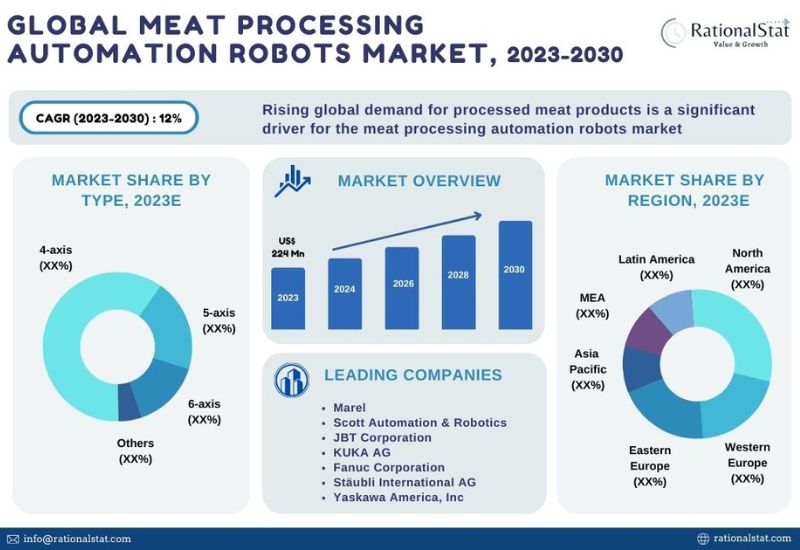The Rise of Meat Processing Automation Robots
Introduction
The global meat processing automation robots market is projected to see substantial growth in the coming years, with an expected market value of US$ 495.2 million by 2030. According to a recent market study by RationalStat, the market is currently valued at US$ 224 million in 2023, indicating a promising trajectory for the industry.
Market Trends and Growth Opportunities
As the demand for processed meat continues to rise globally, the need for automation in meat processing facilities is becoming increasingly apparent. Automation robots offer a range of benefits, including increased efficiency, improved product quality, and enhanced worker safety.
The market study by RationalStat highlights a projected annual growth rate of 12% for the meat processing automation robots market. This growth is driven by factors such as the increasing demand for processed meat products, the rising labor costs in the meat processing industry, and the advancements in robotics technology.
Impact on Individuals
For individuals working in the meat processing industry, the rise of automation robots could mean a shift in job responsibilities. While some tasks may be taken over by robots, new opportunities for skilled workers to operate and maintain these machines may also arise. Overall, the integration of automation robots is expected to streamline production processes and improve overall efficiency in meat processing facilities.
Global Impact
On a global scale, the adoption of meat processing automation robots is expected to have widespread implications. Increased automation in meat processing facilities could lead to higher production volumes, allowing for greater supply to meet growing consumer demand. Additionally, automation robots can help to standardize processing procedures, ensuring consistency and quality in meat products across different regions.
Conclusion
With the meat processing automation robots market on a steady growth trajectory, it is clear that automation is set to play a significant role in the future of the meat processing industry. By embracing automation technologies, meat processing facilities can enhance efficiency, improve product quality, and meet the growing demands of consumers worldwide.





